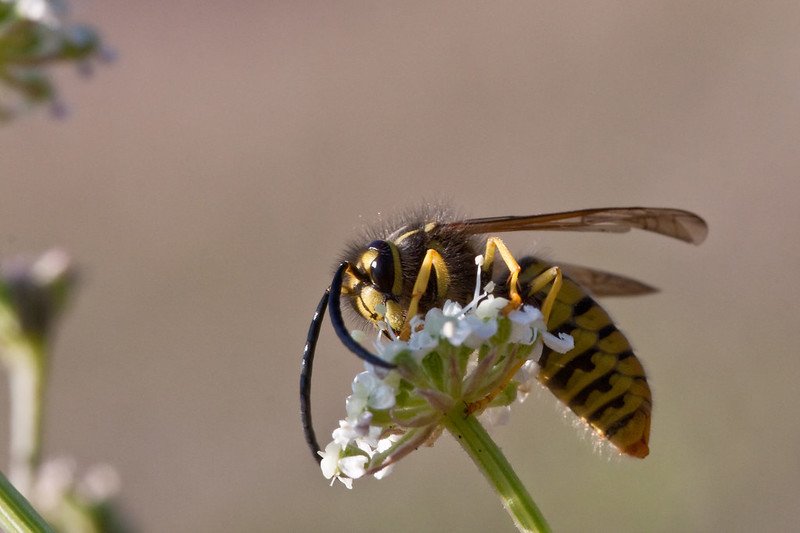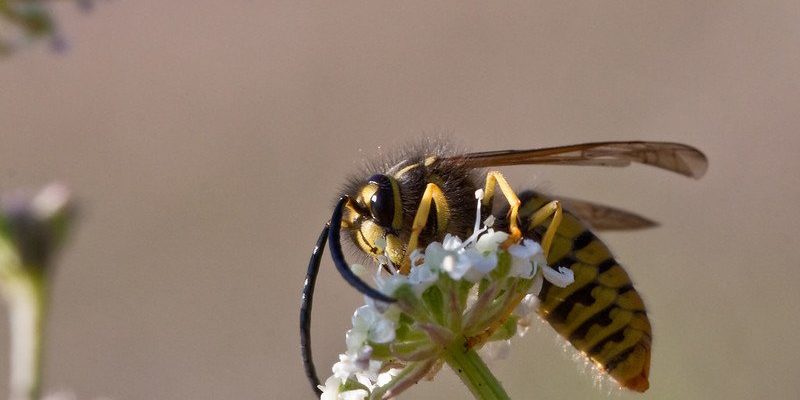
You know, it’s easy to overlook the tiny creatures that share our world. Yellowjackets might not get the same love that butterflies or ladybugs do, but their contributions are nothing short of fascinating. Think of them as the unsung heroes of the insect world, working tirelessly without a lot of recognition. Let’s explore what yellowjackets actually do for our ecosystems and why they deserve a little respect.
What Are Yellowjackets?
Yellowjackets are a type of wasp belonging to the family Vespidae. They are often mistaken for bees, but there are some key differences. For one, yellowjackets have a more slender body and are usually more aggressive. You might recognize them by their bright yellow and black stripes, which serve as a warning to potential predators.
These wasps are social insects, forming colonies that can range from just a few dozen to thousands of individuals. They usually build their nests in the ground or hidden in shady spots. Their lifecycle involves several stages, from egg to larva to adult, and they can be quite resourceful when it comes to finding food. But what do they eat, and why is that important?
The Role of Yellowjackets as Predators
Here’s the thing: yellowjackets are not just scavengers. They are predators in their own right, feasting on various insects, including flies and caterpillars. This is where they really shine in their ecological role. By keeping pest populations in check, they help maintain a balance in the ecosystem.
Imagine a garden overrun with pesky aphids. Without natural predators like yellowjackets, these pests could multiply uncontrollably, damaging plants and ruining crops. So, by munching on these smaller insects, yellowjackets indirectly contribute to healthier gardens and farms. They can even help reduce the need for chemical pesticides, which is a win-win for everyone.
The Importance of Yellowjackets in Pollination
While not as effective as bees, yellowjackets do contribute to pollination. They will visit flowers to gather nectar, which they feed to their young. As they flit from bloom to bloom, they help in the pollination process, enabling plants to reproduce.
Think of them as the backup dancers in the world of pollination—they may not be the stars, but they certainly add value. This means that yellowjackets indirectly support the growth of various plants, including many that we rely on for food. So, the next time you see them buzzing near flowers, remember that they’re not just pests; they’re part of a bigger picture.
Food Source for Other Wildlife
Yellowjackets also serve as a crucial food source for many animals. Birds, mammals, and even some reptiles hunt these wasps, adding to the complexity of the food web. For instance, certain birds like sparrows and chickadees will eat yellowjackets, especially in late summer when their numbers peak.
This predator-prey relationship helps sustain different species in the ecosystem. When yellowjackets thrive, they provide sustenance for wildlife, which in turn contributes to biodiversity. So, their existence is a vital thread in the fabric of ecosystem health, demonstrating how interconnected nature really is.
Decomposers and Clean-Up Crew
Yellowjackets are also important decomposers. They scavenge on carrion and dead insects, breaking down organic matter and recycling nutrients back into the soil. This seemingly grim job is crucial for maintaining healthy ecosystems, as it prevents the buildup of waste and helps new plants to thrive.
Think of yellowjackets as custodians of the environment; they ensure that nature remains clean and nutrient-rich. A cleaner environment supports healthier plant life, which in turn supports various animal species. So, while they may give some of us the heebie-jeebies, their role in decomposition is vital.
Common Misunderstandings About Yellowjackets
You might be wondering why yellowjackets often get a bad rap. It often comes down to a few misconceptions and their aggressive behavior. Most of the time, they are just trying to protect their nests or find food. They don’t want to sting; their first instinct is usually to flee.
Another common belief is that all wasps are harmful. While yellowjackets can sting, they are just one part of a larger group of wasps that contribute positively to our environment. Understanding their role in the ecosystem can help shift perceptions. Education is key, and by learning about their contributions, we can appreciate them a bit more.
How to Coexist with Yellowjackets
Coexisting with yellowjackets is possible if you take a few precautions. Avoid leaving out food, especially sweet items, when you’re outside. If you’re having a picnic, keep your drinks covered, and be mindful of trash. This will minimize the chances of attracting them.
If you find a nest close to your home, it’s best to contact a professional pest control service rather than trying to remove it yourself. They can safely relocate the nest, allowing you to enjoy your space without the worry of an encounter. Remember, yellowjackets have an important role in the ecosystem; we can respect their space while keeping ourselves safe.
In summary, yellowjackets are much more than just pesky insects. They play vital roles as predators, pollinators, and decomposers in our ecosystems. Understanding their importance can help us appreciate the balance of nature and the interconnectedness of all living things.
So, the next time you spot a yellowjacket buzzing by, remember that it’s not just a nuisance. It’s a fascinating part of our world, working hard behind the scenes to keep our ecosystems healthy. Let’s give them a bit of credit where it’s due!

